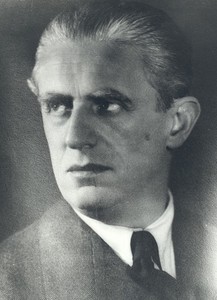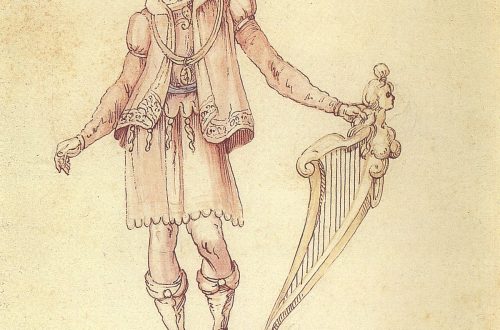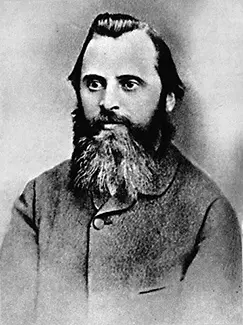
Gian Francesco Malipiero |
Gian Francesco Malipiero

Born into a family of musicians. From the age of 9 he learned to play the violin. In 1898-99 he attended the Vienna Conservatory (harmony lessons). From 1899 he studied composition and conducting with M. E. Bossi at the Musical Lyceum B. Marcello in Venice, then at the Musical Lyceum in Bologna (he graduated in 1904). Independently studied the work of ancient Italian masters. In 1908-09 he attended lectures by M. Bruch in Berlin. In 1921-24 he taught at the Conservatory. A. Boito in Parma (music theory), in 1932-53 professor (composition class; since 1940 also director) of the Conservatory. B. Marcello in Venice. Among his students are L. Nono, B. Maderna.
Malipiero is one of the greatest Italian composers of the 20th century. He owns works of various genres. He was influenced by the French Impressionists, as well as N. A. Rimsky-Korsakov. Malipiero’s work is distinguished by a bright national character (reliance on folk and old Italian traditions), and the widespread use of modern musical means. Malipiero contributed to the revival of Italian instrumental music on a fundamentally new basis. He refused a consistent thematic development, preferring to it the mosaic contrasting of individual episodes. Only in some works dodecaphone techniques are used; Malipiero was opposed to avant-garde schemes. Malipiero attached great importance to melodic expressiveness and improvisational presentation of the material, strove for simplicity and completeness of form.
He made a great contribution to the development of the Italian musical theater. In his numerous operas (more than 30), often written to his own librettos, pessimistic moods prevail.
In a number of works based on classical subjects (Euripides, W. Shakespeare, C. Goldoni, P. Calderon, and others), the composer overcomes his characteristic mysticism. Malipiero was also a researcher, connoisseur and promoter of early Italian music. He headed the Italian Institute of Antonio Vivaldi (in Siena). Under the editorship of Malipiero, the collected works of C. Monteverdi (vols. 1-16, 1926-42), A. Vivaldi, works by G. Tartini, G. Gabrieli and others were published.
MM Yakovlev
Compositions:
operas – Canossa (1911, post. 1914, Costanzi Theatre, Rome), The Dream of Autumn Sunset (Songo d’un tramonto d’autunno, after G. D’Annunzio, 1914), the Orpheid trilogy (Death of masks – La morte delle maschere; Seven songs – Seite canzoni; Orpheus, or the Eighth Song – Orfeo ovvero l’ottava canzone, 1919-22, post. 1925, Dusseldorf), Filomela and enchanted by her (Filomela e l’infatuato, 1925, post. 1928, German Theater, Prague ), Goldoni’s three comedies (Tre commedie Goldoniane: Coffee House – La bottega da caffé, Signor Todero-Bruzga – Sior Todaro brontolon, Chiogin skirmishes – Le baruffe chiozzotte; 1926, Hesse Opera House, Darmstadt), Night Tournament (Torneo notturno, 7 stage nocturnes, 1929, post. 1931, National Theatre, Munich), Venetian mystery trilogy (Il mistero di Venezia: Eagles of Aquile – Le aquile di Aquileia, Lzhearlekin – Il finto Arlecchino, Ravens of St. Mark – I corvi di San Marco, ballet, 1925-29, post. 1932, Coburg), The Legend of the Foundling Son (La favola del figlio combiato, 1933, post. 1934, Br aunschweig), Julius Caesar (according to W. Shakespeare, 1935, post. 1936, theater “Carlo Felice”, Genoa), Antony and Cleopatra (according to Shakespeare, 1938, theater “Comunale”, Florence), Hecuba (Ecuba, after Euripides, 1939, post. 1941, theater “Opera”, Rome), Merry company (L’allegra brigata, 6 short stories, 1943, post. 1950, La Scala Theatre, Milan), Heavenly and Hellish Worlds (Mondi celesti e infernali, 1949, Spanish 1950, on the radio, post. 1961, theater ” Fenice, Venice), Donna Urraca (after P. Merime, 1954, T-r Donizetti, Bergamo), Captain Siavento (1956, post. 1963, San Carlo Theater, Naples), Captive Venus (Venere prigioniera, 1956 , post. 1957, Florence), Don Giovanni (4 scenes after Pushkin’s Stone Guest, 1963, Naples), prude Tartuffe (1966), Metamorphoses of Bonaventure (1966), Heroes of Bonaventure (1968, post. 1969, theater “Piccola Scala ”, Milan), Iscariot (1971) and others; ballets – Panthea (1919, post. 1949, Vienna), Masquerade of the Captive Princess (La mascherata delle principesse prigioniere, 1924, Brussels), New World (El mondo novo, 1951), Stradivarius (1958, Dortmund); cantatas, mysteries and other vocal and instrumental compositions; for orchestra – 11 symphonies (1933, 1936, 1945, 1946, 1947, 1947, 1948, 1950, 1951, 1967, 1970), Impressions from nature (Impressionni dal vero, 3 cycles, 1910, 1915, 1922), Breaks in silence (Pause del silenzio, 2 cycles, 1917, 1926), Armenia (1917), Passacaglia (1952), Every Day’s Fantasy (Fantasie di ogni giorno, 1951); Dialogues (No 1, with Manuel de Falla, 1956), etc.; concerts with orchestra – 5 for fp. (1934, 1937, 1948, 1950, 1958), for 2 fp. (1957), 2 for Skr. (1932, 1963), for wlc. (1937), for Skr., Vlch. and fp. (1938), Variations without a theme for piano. (1923); chamber instrumental ensembles – 7 strings. quartets, etc.; piano pieces; romances; music for drama theater and cinema.
Literary works: The orchestra, Bologna, 1920; Theater, Bologna, 1920; Claudio Monteverdi, Mil., 1929; Stravinsky, Venice, [1945]; Cossн goes the world [автобиография], Mil., 1946; The harmonious labyrinth, Mil., 1946; Antonio Vivaldi, [Mil., 1958].





